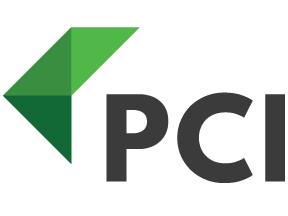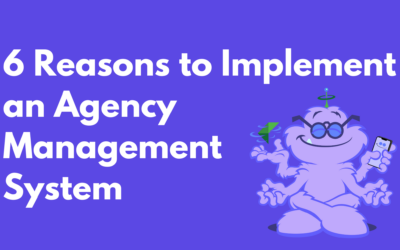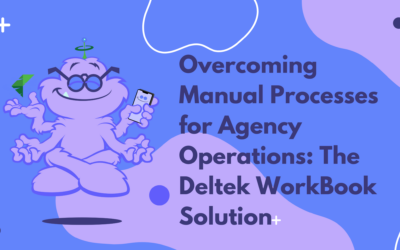[vc_row][vc_column][ultimate_heading main_heading=”Effective resource management can be broken down into the following steps” heading_tag=”h3″ alignment=”left”][/ultimate_heading][vc_empty_space][vc_single_image image=”6780″ img_size=”large”][vc_column_text]Following these steps will ensure your projects stay on budget, and you can think long-term.
Step 1: Get a complete view of tasks being performed over the next two months. Create project plans for all signed projects, and ensure Project Managers are also planning a couple of months ahead.
Step 2: Move to long-term project planning, including any possible opportunities. For projects more than two months away, this may require monthly updates.
Step 3: Finally, implement revenue forecasting—so you can combine the first two steps and make any hiring decisions.
To follow resource management improvements, we recommend tracking these KPIs:
- Actual Utilization: Hours on billable projects a percentage of available hours – per person.
- Planned Utilization: Weekly view of future workload, expressed as hours booked or utilization
- Freelance Ratio: % of your total salary costs spend on freelancers, tracked monthly
[/vc_column_text][ultimate_heading main_heading=”Establish Intuitive Process” heading_tag=”h4″ alignment=”left”][/ultimate_heading][vc_empty_space][vc_column_text]Resource management is a difficult discipline to implement. To prevent teams from resorting to local spreadsheets there must be clear, easy-to follow processes in place. To maintain a strong level of control, we recommend implementing these four processes with a regular cadence every month:[/vc_column_text][vc_single_image image=”6781″ img_size=”full”][vc_column_text]Four key processes to put in place:
- Setting the project team – Projects fail when you staff them solely based on availability. So it is important to select the right team from the beginning, especially on bigger projects, to ensure successful delivery and provide Resource Managers with important metrics to identify potential burnout and underutilization.
- Weekly planning process – Keeping plans up to date is crucial. Here’s a suggested schedule for optimizing weekly planning:
Step 1: PMs update plans every Thursday.
Step 2: Department heads and Resource Managers review and adjust bookings on Friday.
Step 3: Employees execute according to bookings.
- Monthly forecast – Resource plans can’t always be updated for the full length of the project, especially when not all opportunities are visible. Instead, introduce a monthly planning process for Client Services and PMs, where they create a picture of probable upcoming work.
- Freelancer usage – Freelancers often play a vital role in project delivery. But if you don’t monitor and control how often they are used, they can become costly and break your project budget. To minimize unnecessary freelancer use, ensure Resource Managers are made aware before any purchase is initiated.
In order to keep project costs up to date, streamline the invoicing process, and prevent budget overruns, we suggest that freelance costs are applied using a purchase order (PO) process with an approval workflow.[/vc_column_text][ultimate_heading main_heading=”Plan Effectively for the Future” heading_tag=”h4″ alignment=”left”][/ultimate_heading][vc_empty_space][vc_column_text]Who should be involved?
If resource plans are not visible across the planning team, it leads to poor data quality and untrustworthy planning. Everyone needs to be on board, with strong, decisive support from management.[/vc_column_text][vc_single_image image=”6783″ img_size=”large”][vc_column_text]The roles we most often see involved in the planning stage include:
- Project Managers should update and own the progress of the project.
- Line Managers or Department Heads should own the resources, and ensure everyone involved is placed effectively.
- Resource or Traffic Managers optimize planning and utilization by streamlining task assignments and employee usage.
In how much detail?
The more detailed your plan, the harder it is to update, as the number of entries and frequency for updating will increase. But how you plan depends on your agency’s requirements. Below is a practical guide to planning:[/vc_column_text][vc_single_image image=”6782″ img_size=”large”][vc_column_text]Practical tips for resource planning:
- Only plan your billable staff—not your admin team.
- If certain freelancers work for you frequently, include them when resource planning.
- Lay out your project backlog and ensure that it is frequently updated to get a forecast of the next two months’ work.
- If you want to predict freelance or hiring needs, consider and plan resources for probable opportunities from beginning to end.
[/vc_column_text][ultimate_heading main_heading=”Get More From Your People” heading_tag=”h4″ alignment=”left”][/ultimate_heading][vc_empty_space][vc_column_text]Getting more from your employees doesn’t just mean higher quality work—it will improve your bottom line too. And when you optimize utilization, whether at employee or management level, your people benefit from work/life balance and become a happier, healthier team. So if you don’t already measure utilization, we encourage you to consider both realized and future utilization in your resource plans. We recommend tracking these KPIs:
Billable utilization: hours billable work / hours available *100
Productive utilization: hours billable work + hours business development / hours available * 100[/vc_column_text][/vc_column][/vc_row]




